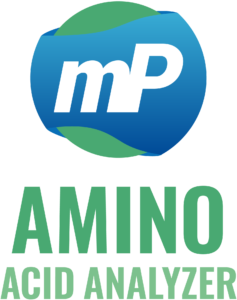Using of Amino Acid Analyzer makes the role of corn syrup in amino acid fermentation more clear
Among all the grain crops, corn shares the largest planting area in China, and a large planting area in the world. The world’s annual output of corn kernels is about 841 million tons, and ours’ has exceeded 200 million tons, which are mainly used as feed for animal husbandry. However, the protein content, especially the lysine content, is low in ordinary corn kernels.
Corn protein, primarily composed of zein, is deficient in essential amino acids like lysine and tryptophan, limiting its nutritional quality for monogastric animals (Wu & Messing, 2014).
Lysine as an essential amino acid
And the lysine is one of essential nutrients for the growth and development of livestock and poultry. It cannot be synthesized in the body and must be obtained from food. Therefore, when ordinary corn is used as feed for monogastric livestock, a large amount of protein feed such as bean cake and industrial lysine must be added. This not only increases the cost of animal husbandry feed, but also causes huge food waste due to the low digestibility of ordinary corn. Compound feed with high-quality protein corn, have advantages in terms of meat ratio, feeding period and feeding cost, which has been proved in experiments.
The introduction of Quality Protein Maize (QPM) varieties with elevated lysine and tryptophan levels has been shown to improve animal growth performance and feed efficiency (Krivanek et al., 2007).
In the process of high-quality protein corn breeding, a large number of tests need to be done for the content of lysine of the high-lysine corn germplasm. Amino acid analyzer can detect the content of lysine in corn kernels, so the ordinary corn and the high -lysine corn and be distinguished, and a basis can be provided for the content of lysine in the corn kernels of high-quality protein corn breeding.
Amino acid analysis through techniques such as HPLC with post-column derivatization provides accurate quantification of lysine content in breeding programs and quality control (Cohen & Michaud, 1993).
Components in corn syrup
Corn syrup is a by-product during the production of corn starch while using wet milling. It contains a large amount of sulfurous acid, polypeptides, polysaccharides, proteins and a variety of amino acids such as arginine, glutamic acid, histidine, phenylalanine, alanine and β-phenylethylamine. The main uses include spraying to prepare fiber feed, as an additive for compound fertilizers and as a source of nitrogen for fermentation. Many components in that syrup are precursors for the production of amino acids by fermentation. These free amino acids account for 25% of the dry mass of corn syrup. If corn syrup is hydrolyzed with hydrochloric acid for 18 hours, peptides and proteins are hydrolyzed into amino acids and the content can reach more than 50% of the dry mass.
Hydrolyzed corn syrup has been successfully integrated into microbial fermentation systems as a nitrogen and carbon source, boosting the production yield of industrial amino acids such as glutamate and lysine (Liu et al., 2018).
At present, the total amount of corn syrup added in the amino acid fermentation process only accounts for a small part of the corn syrup output, and most corn syrup is used for spraying to prepare fiber feed or making compound fertilizer.
Corn syrup provides nitrogen source and growth factors in amino acid fermentation, the content of biotin and restrictive amino acids have great influence on the fermentation of various amino acids. It is a very cheap and effective organic nitrogen source in fermentation. Therefore, increasing the amount of corn syrup to replace or reduce nitrogen sources such as soybean meal hydrolysate, yeast powder, and hair powder is the most economical way to reduce production cost.
The optimization of corn syrup utilization not only reduces production costs but also supports a circular economy approach by valorizing agro-industrial by-products (Zhang et al., 2021).
Researchers on the role of corn syrup in amino acid fermentation, provide practical and theoretical basis for increasing the use of corn syrup.

References:
- Wu Y, Messing J. „Proteome balancing of the maize seed for higher nutritional value.“ Front Plant Sci. 2014;5:240. doi:10.3389/fpls.2014.00240
- Krivanek AF, de Groote H, Gunaratna NS, Diallo AO, Friesen D. „Breeding and disseminating quality protein maize (QPM) for Africa.“ Afr J Biotechnol. 2007;6(4):312-324
- Cohen SA, Michaud DP. „Synthesis of a fluorescent derivatizing reagent, 6-aminoquinolyl-N-hydroxysuccinimidyl carbamate, and its application for the analysis of hydrolysate amino acids via high-performance liquid chromatography.“ Anal Biochem. 1993;211(2):279-287. doi:10.1006/abio.1993.1270
- Liu X, Jiang Y, Tang Q, et al. „Utilization of corn steep liquor as an alternative nitrogen source for amino acid fermentation: Review.“ Bioresour Technol. 2018;249:352-361. doi:10.1016/j.biortech.2017.10.034
- Zhang L, Liu R, Yin X, et al. „Sustainable valorization of corn processing by-products: applications in fermentation and biorefinery.“ Ind Crops Prod. 2021;169:113624. doi:10.1016/j.indcrop.2021.113624

